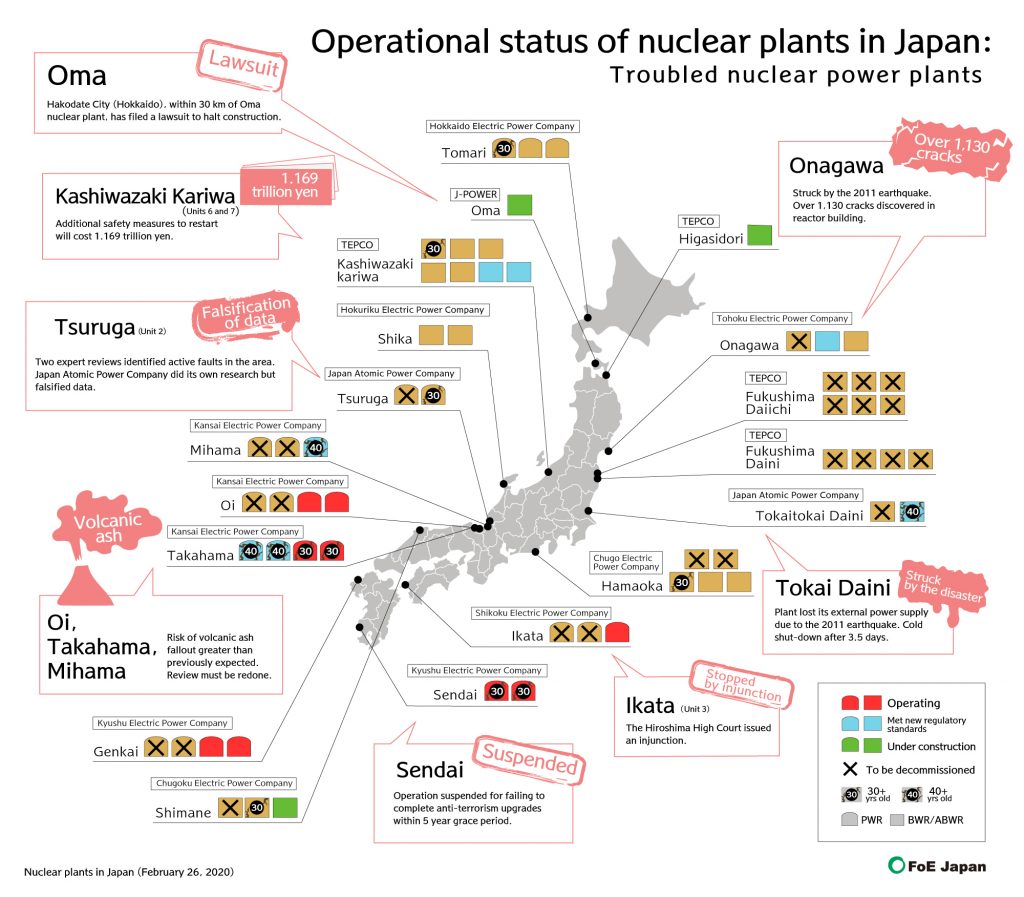
High costs and many safety problems have prevented most nuclear reactors from restarting in Japan.
Almost nine years have passed since the accident at the Fukushima Daiichi Nuclear Power Plant. As of February 10, 2020, nine reactors had been restarted in Japan, but Eastern Japan and Hokkaido were still “nuclear free.”
In 2019, no nuclear power plants were restarted.
Nuclear power accounted for only about 3% of Japan’s total electricity generation in 2017.
Delays in the construction of anti-terrorism upgradesled to the suspension of four reactors at the Sendai and Takahama nuclear plants in 2020.
The third reactor at the Ikata nuclear plant, which is undergoing a regular inspection, cannot resume operation even after the regular inspection is finished because of an injunction by the Hiroshima High Court.
Six other nuclear reactors have been approved by the Nuclear Regulation Authority on the grounds that they have passed the new safety standards.
Of these, there is no prospect of local consent for Japan Atomic Power’s Tokai Dai-ni Nuclear Power Station (Ibaraki Prefecture).
The cost of safety measures to restart the No. 6 and No. 7 reactors at TEPCO’s Kashiwazaki-Kariwa Nuclear Power Plant (Niigata Prefecture) has risen to 1.169 trillion yen. Niigata Prefecture has been investigating the cause of the accident at the Fukushima Daiichi Nuclear Power Plant and its impact on people’s health and livelihoods. The prefecture says that until the investigations have been completed, there will be no discussion on the restart of reactors.
